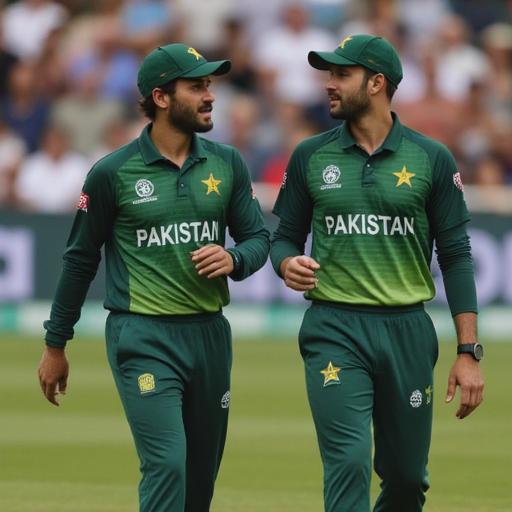Restructuring Pakistan Cricket’s Domestic Scene: A Path to Glory?

Restructuring Pakistan Cricket’s Domestic Scene: A Path to Glory?
Pakistan cricket, a nation steeped in passion and sporting history, is currently facing a critical juncture. Recent struggles in international cricket have ignited a fervent debate about the efficacy of the current domestic structure. Can restructuring the domestic system truly unlock the potential that lies dormant within Pakistani cricket? This article delves into the challenges and opportunities of reforming the domestic setup, exploring its impact on the national team’s future.
Unveiling the Cracks in the Current System
Pakistan’s domestic cricket, while boasting talented players, often struggles to produce consistent high-performance athletes. A multitude of factors contribute to this predicament: a fragmented system lacking coherence, poor player development programs, inconsistent coaching standards, and a lack of structured talent identification. These issues reverberate throughout the national team, leading to inconsistency and underwhelming performances on the international stage.
The current system, with its varying formats and tournaments, sometimes lacks a clear developmental pathway. Talented players may find themselves caught in a maze of competing leagues and competitions, hindering their consistent progress. Moreover, the limited availability of high-quality training facilities and equipment in certain regions further exacerbates this problem. This uneven distribution of resources contributes to an imbalance in the overall standard of domestic cricket.
Another crucial aspect to address is the coaching environment. Investing in professional and experienced coaches who can guide young players through their development is critical. Furthermore, implementing stringent training programs aligned with international standards, utilizing modern training methodologies and technology, is vital to ensuring young talent reaches its full potential. Emphasis on strength and conditioning, mental conditioning, and technical skill development is essential.
The Need for a Holistic Approach
A successful restructuring effort must embrace a holistic approach, encompassing various facets of domestic cricket. A centralized governing body can play a vital role in standardizing regulations, improving resource allocation, and coordinating the efforts of different stakeholders. This unified approach would streamline the entire system.
This comprehensive reorganization must meticulously identify and cultivate talent at the grassroots level. Stronger scouting networks are necessary to unearth hidden gems in the underprivileged regions. This should be integrated into a robust player development programme that spans the entire spectrum from junior to senior levels. This program should incorporate a variety of formats and ensure a smooth transition.
Creating a tiered structure for domestic competitions allows for a natural progression of players, from developmental leagues to the higher-level competitions. This structured pathway will enable young players to gradually learn and adapt to the rigors of competitive cricket, ensuring a steady growth curve.
Establishing a clear relationship between domestic cricket and the national team is also paramount. This can be achieved by regularly inviting outstanding domestic performers into the national setup, facilitating a direct pathway between the domestic and international spheres. This constant interaction will allow national team selectors to closely observe the talent pool, further enhancing the standards of domestic cricket itself. This fosters a culture of interconnectedness and allows for continuous improvements in both domains.
Beyond the Pitch: Ensuring Sustainability
Restructuring also entails tackling the crucial aspects beyond the pitch. Financial stability and long-term planning are essential. A transparent and accountable funding mechanism is vital. This includes partnerships with both private and public sectors that can ensure sustainable funding models for future generations of cricketers and help manage the growth of the sport in Pakistan.
Equitable distribution of resources is of utmost importance. The domestic leagues should receive adequate funding, facilitating the creation of high-quality training facilities and procuring top-quality equipment across all regions. This ensures an even playing field for all talented individuals from every corner of the country. This includes ensuring that facilities are not only available but are accessible and affordable for all who aspire to play.
Furthermore, addressing the issue of infrastructure development is crucial for long-term success. Upgrading existing facilities and constructing new ones, with a focus on security and accessibility, ensures that all players, regardless of their background or location, have the same opportunities for practice and development.
Establishing a robust system of player welfare is also vital. This includes providing mental health support, addressing concerns over player well-being, and creating a supportive and respectful environment for all participants. This holistic approach addresses not only the sporting aspects of cricket but also the overall well-being of those involved in the game.
A Vision for the Future
The vision for Pakistan cricket’s future must encompass a complete overhaul of the domestic system. This includes investing in quality coaching, prioritizing player development programs, streamlining the talent identification process, and focusing on creating a more robust infrastructure for the game.
By addressing these critical areas, Pakistan can create a sustainable system that produces top-quality cricketers and fosters a vibrant and competitive domestic scene. This, in turn, will inevitably strengthen its international standing, restoring its rightful place among the top cricketing nations worldwide.
The transformation of Pakistan’s domestic cricket is not simply a matter of tweaking the system; it’s about nurturing a culture of excellence, dedication, and hard work. It’s a commitment to creating an environment where young talent can flourish, receive the necessary support, and ultimately contribute to Pakistan’s triumph on the international stage. This is the path to reviving the spirit and the glory that Pakistan cricket deserves.
Conclusion
Pakistan cricket is at a crossroads. The path to restoring its glory lies in a comprehensive restructuring of its domestic system. This involves a holistic approach encompassing talent identification, coaching development, infrastructural improvements, and financial sustainability. Only then can the nation fully unlock the immense potential it possesses, ushering in a golden era of Pakistani cricket.